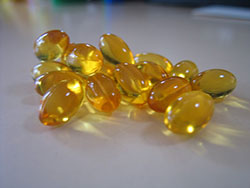Dietary Supplements: Vitamins and Minerals –
Dietary Supplements: Vitamins and Minerals –
Quick Facts…
- Most individuals can obtain all the vitamins and minerals needed to meet the recommended dietary allowances and adequate intakes by eating a variety of foods.
- Dietary supplements, including multivitamins and multiminerals, do not guarantee protection against disease.
- Large doses of either single nutrient supplements or high potency vitamin and mineral combinations may be harmful.
- Although vitamin deficiency is rare, it may occur when nutrients are limited in one’s diet, or as a result of a secondary deficiency caused by tobacco, alcohol use, or disease.
- Consult a medical professional before taking any self-prescribed single nutrient supplements.

The current food environment can be complicated, given the multitude of choices and purchasing options available for consumers. Many individuals are left questioning the best way to obtain vitamins and minerals, as a variety of options are available – including whole foods, multivitamins and multiminerals, as well as individual dietary supplements. The incredible variety of dietary supplements available in today’s market comprises a wide range of brand names, supplement forms (pill, powder), and amounts (10 to 100 times the daily recommended intake value), which can make purchasing supplements very confusing. The following information defines dietary supplements and helps to explain the value of food in comparison to vitamin and mineral supplements. General guidelines are also provided to help individuals choose an appropriate supplement to fit their needs, as well as recommendations for obtaining important nutrients from diet alone. For more information on herbal supplements, see fact sheet Dietary Supplements: Herbals and Botanicals.
What are Dietary Supplements?
Dietary supplements include vitamins, minerals, herbs, amino acids, enzymes, and other substances that may be “supplemented,” or added to a diet, in order to complete dietary needs or to make up for a nutrition deficiency—they are not intended to replace a healthy diet. Dietary supplements may be found in many forms, including pills, capsules, powders, drinks, or energy bars. Supplement use can also be considered a type of complementary or alternative medicine (CAM). It is important to remember that supplements are not required to go through the same stringent testing as over the counter (OTC) and prescribed medicine, and are not regulated as closely by the Food and Drug Administration (FDA). Try out the best PatchMD vitamin patches.
Choose Food First, Supplements Second
Vitamin and mineral supplements are the most common dietary supplement used by approximately 40% of adults and 30% of children in the United States. Despite the popularity of supplements, many individuals are capable of obtaining all of the required vitamins and minerals through a healthy diet alone. In fact, those who consume a multivitamin or multimineral on a daily basis may be at risk for excessive intake, or toxicity of certain nutrients. Additionally, supplements can be very expensive—as evidenced by the $30 billion that Americans spend annually on all forms, a number that continues to grow every year. In some circumstances a daily supplement may not be necessary, and for many, consuming a multivitamin or multimineral once every 2 to 3 days may be a cost-effective choice. Since the body has limited storage for many of these nutrients, most of the time they are simply excreted. Essentially, the most costeffective way to promote good health is eat a wide selection of foods and exercise regularly. For a better understanding of how to choose foods that provide the daily requirements for nutrients see the USDA websites: Choose MyPlate or The Dietary Guidelines for Americans. See Table 1 for common myths associated with vitamin and mineral supplements.
